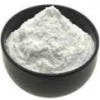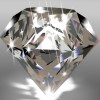Sodium Alginate Manufacturer Exporter IP BP Ph Eur USP NF FCC Food Grade Manufacturer Exporter
Crystal Clear Products is a manufacturer exporter company manufacturing several chemicals including Sodium Alginate and IP BP Ph Eur USP NF JP ACS AR Analytical Reagent FCC Food Grade, Pharmaceutical Chemicals at best prices. The group has offices and factories in India USA and UAE and toll manufacturers in China and sells to almost every country in the world.
The manufacturing facilities of our partner manufacturers have one or more of FDA-cGMP-GLP certification, ISO-9001 certification, Halal and/or Kosher certification, REACH pre-registration ISO-22000 HACCP. We also allow third party inspection of products offered. We can offer small quantities from laboratory and trial packs to large shipments of container loads of material.
Hazard Statements:
Not a hazardous substance or mixture according to Regulation (EC) No. 1272/2008.
This substance is not classified as dangerous according to Directive 67/548/EEC.
Not considered hazardous by the OSHA Hazard Communication Standard (29 CFR 1910.1200)
Signal Word: None
Transport Information
DOT USA, TDG Canada & ADR/RID Europe: Not dangerous goods.
IMO/IMDG: Not dangerous goods.
IATA/ICAO: Not dangerous goods.
You may please visit:
Sodium Alginate SDS of Manufacturers
Sodium Alginate IP BP Ph Eur USP NF FCC Food AR ACS Reagent Grade Manufacturers

CAS Number 9005-38-3 Sodium Alginate, Molecular Weight: Varies, Chemical Formula: (C6H7O6Na)n
Sodium Alginate USP NF Grade Specifications
Alginic acid, sodium salt --- CAS 9005-38-3.
Sodium Alginate is the purified carbohydrate product extracted from brown seaweeds by the use of dilute alkali. It consists chiefly of the sodium salt of Alginic Acid, a polyuronic acid composed of -D-mannuronic acid residues linked so that the carboxyl group of each unit is free while the aldehyde group is shielded by a glycosidic linkage. It contains not less than 90.8 percent and not more than 106.0 percent of sodium alginate of average equivalent weight 222.00, calculated on the dried basis.
Identification:
A: To 5 mL of a solution (1 in 100) add 1 mL of calcium chloride: a voluminous, gelatinous precipitate is formed immediately.
B: To 10 mL of a solution (1 in 100) add 1 mL of 4 N sulfuric acid: a heavy, gelatinous precipitate is formed.
Microbial limits: The total bacterial count does not exceed 200 cfu per g, and the tests for Salmonella species and Escherichia coli are negative.
Loss on drying: Dry it at 105 for 4 hours: it loses not more than 15.0% of its weight.
Total ash: Proceed as directed for Total Ash under Methods of Analysis, carefully igniting about 3 g, accurately weighed, in a tared platinum dish, until the residue is thoroughly carbonized (about 5 minutes), and then igniting in a muffle furnace at a temperature of 800 ± 25 until the carbon is completely burned off (approximately 75 minutes): between 18.0% and 27.0% of ash is found, calculated on the dried basis.
Arsenic: 1.5 ppm.
Lead: Add 1.0 g to 20 mL of nitric acid in a 250-mL conical flask, mix, and heat carefully until the Sodium Alginate is dissolved. Continue the heating until the volume is reduced to about 7 mL. Cool rapidly to room temperature, transfer to a 100-mL volumetric flask, and dilute with water to volume. A 50.0-mL portion of this solution contains not more than 5 microgm of lead (corresponding to not more than 0.001% of Pb), 15 mL of ammonium citrate solution, 3 mL of potassium cyanide solution, and 0.5 mL of hydroxylamine hydrochloride solution being used for the test. After the first dithizone extractions, wash the combined chloroform layers with 5 mL of water, discarding the water layer and continuing in the usual manner by extracting with 20 mL of 0.2 N nitric acid.
Heavy metals: Conduct the ignition in a platinum crucible, and use nitric acid in place of sulfuric acid to wet the test specimen: the limit is 0.004%.
Sodium Alginate BP Ph Eur Grade Specifications
Action and use: Excipient.
DEFINITION
Sodium alginate consists mainly of the sodium salt of alginic acid, which is a mixture of polyuronic acids [C6H8O6)n] composed of residues of D-mannuronic acid and L-guluronic acid. Sodium alginate is obtained mainly from algae belonging to the Phaeophyceae.
CHARACTERS
Appearance: White or pale yellowish-brown powder.
Solubility: Slowly soluble in water forming a viscous, colloidal solution, practically insoluble in ethanol (96 per cent).
IDENTIFICATION
A. Dissolve 0.2 g with shaking in 20 ml of water. To 5 ml of this solution add 1 ml of calcium chloride solution. A voluminous gelatinous mass is formed.
B. To 10 ml of the solution prepared in identification test A add 1 ml of dilute sulphuric acid. A gelatinous mass is formed.
C. To 5 mg add 5 ml of water, 1 ml of a freshly prepared 10 g/l solution of 1,3-dihydroxynaphthalene in ethanol (96 per cent) and 5 ml of hydrochloric acid. Boil for 3 min, cool, add 5 ml of water, and shake with 15 ml of di-isopropyl ether. Carry out a blank test. The upper layer obtained with the substance to be examined exhibits a deeper bluish-red colour than that obtained with the blank.
D. It complies with the test for sulphated ash. The residue obtained, dissolved in 2 ml of water, gives reaction (a) of sodium.
TESTS
Solution S: Dissolve 0.10 g in water, with constant stirring, dilute to 30 ml with the same solvent and allow to stand for 1 h.
Appearance of solution: The solution is not more opalescent than reference and not more intensely coloured than intensity 6 of the range of reference solutions of the most appropriate colour.
Dilute 1 ml of solution S to 10 ml with water R.
Chlorides: Maximum 1.0 per cent.
Calcium: Maximum 1.50 per cent.
Heavy metals: Maximum 20 ppm.
Loss on drying: Maximum 15.0 per cent, determined on 0.1000 g by drying in an oven at 105C for 4 h.
Sulphated ash: 30.0 per cent to 36.0 per cent (dried substance), determined on 0.1000 g.
Microbial contamination: Total viable aerobic count not more than 103 micro-organisms per gram, determined by plate-count. It complies with the tests for Escherichia coli and Salmonella.
Sodium Alginate FCC Food Grade Specifications
Algin
(C6H7O6Na)n Equiv wt, calculated 198.11
Equiv weight, actual (average.) 222.00
INS: 401 CAS 9005-38-3
DESCRIPTION
Sodium Alginate occurs as a white to yellow-brown, fibrous or granular powder. It is the sodium salt of alginic acid. It dissolves in water to form a viscous, colloidal solution. It is insoluble in alcohol and in hydroalcoholic solutions in which the alcohol content is greater than about 30% by weight. It is insoluble in chloroform, in ether, and in acids having a pH lower than about 3.
Function: Stabilizer; thickener; emulsifier; gelling agent.
REQUIREMENTS
Identification: -
A. Add 1 mL of calcium chloride to 5 mL of a 1:100 aqueous solution. A voluminous, gelatinous precipitate forms.
B. Add 1 mL of 2 N sulfuric acid to 10 mL of a 1:100 aqueous solution. A heavy, gelatinous precipitate forms.
C. Place about 5 mg of sample into a test tube, add 5 mL of water, 1 mL of a freshly prepared 1:100 naphtholresorcinol:ethanol solution, and 5 mL of hydrochloric acid. Heat the mixture to boiling, boil gently for about 3 min, and then cool to about 15C. Transfer the contents of the test tube to a 30-mL separator with the aid of 5 mL of water, and extract with 15 mL of isopropyl ether. Perform a blank determination and make any necessary correction. The isopropyl ether extract from the sample exhibits a deeper purple hue than that from the blank.
Assay: A sample yields not less than 18.0% and not more than 21.0% of carbon dioxide (CO2), corresponding to between 90.8% and 106.0% of Sodium Alginate (equiv wt 222.00).
Arsenic: Not more than 3 mg/kg.
Lead: Not more than 5 mg/kg.
Loss on Drying: Not more than 15.0%.
Sodium Alginate IP Grade is also offered.
Contact for Monograph, Uses, Matnfacturing Process, etc of Sodium Alginate and JP IP BP Ph Eur USP NF FCC Food AR ACS Reagent Grade Manufacturer Supplier Exporter
MANUFACTURER EXPORTER
MUMBAI 400009, INDIA. TEL: (OFFICE) 91-9322665100
info@manufacturerexporter.com
Copyright and Usual Disclaimer is Applicable
Last updated
11/19/2022
Manufacturer Suppliers Exporters at Wholesale Prices from India USA and around the Globe
Sodium Acetate Trihydrate Anhydrous -- Sodium Acetate IP BP USP ACS AR Analytical Reagent FCC Food Grade -- Sodium Benzoate -- Sodium Bromide -- Sodium Butyrate -- Monosodium Citrate or Sodium Dihydrogen Citrate -- Disodium Hydrogen Citrate -- Sodium Citrate -- Sodium Erythorbate -- Sodium Formate -- Sodium Hyaluronate -- Sodium Lactate -- Sodium lactobionate -- Sodium Malate -- Sodium Oleate -- Sodium Selenite -- Sodium Selenate -- Sodium Stearate -- L-Selenomethionine -- Sodium Tartrate -- Sodium Thiosulfate Thiosulphate Pentahydrate Anhydrous -- Sodium Thiosulphate Thiosulfate IP BP USP ACS AR Analytical Reagent FCC Food Grade -- Sodium Diacetate -- Sodium Propionate -- Sodium Hydroxymethanesulfonate Formaldehyde Bisulfite -- Sodium Adipate --
Sodium Alginate -- Calcium Alginate -- Magnesium Alginate -- Sodium Methyl Hydroxybenzoate or Sodium Methylparaben -- Sodium Ethyl Hydroxybenzoate or Sodium Ethylparaben -- Sodium Butyl hydroxybenzoate or Sodium Butylparaben -- Sodium Propyl Hydroxybenzoate or Sodium Propylparaben --






